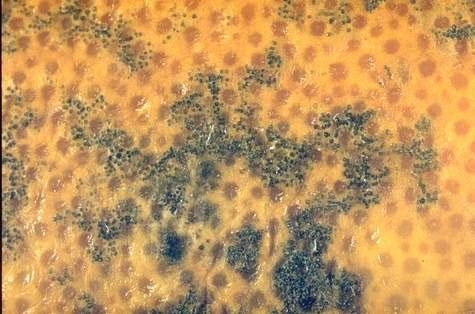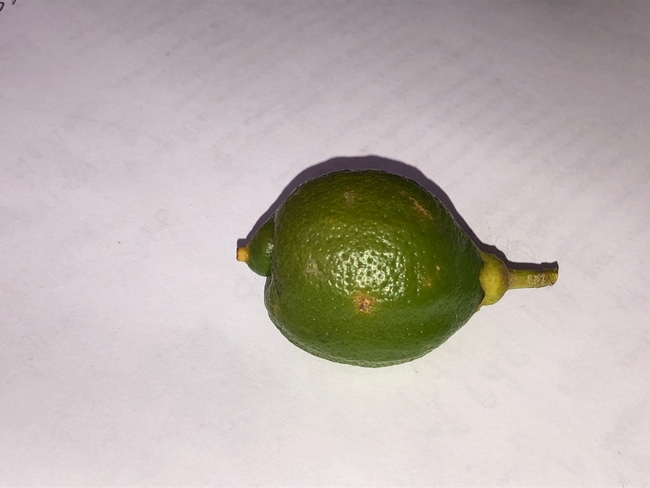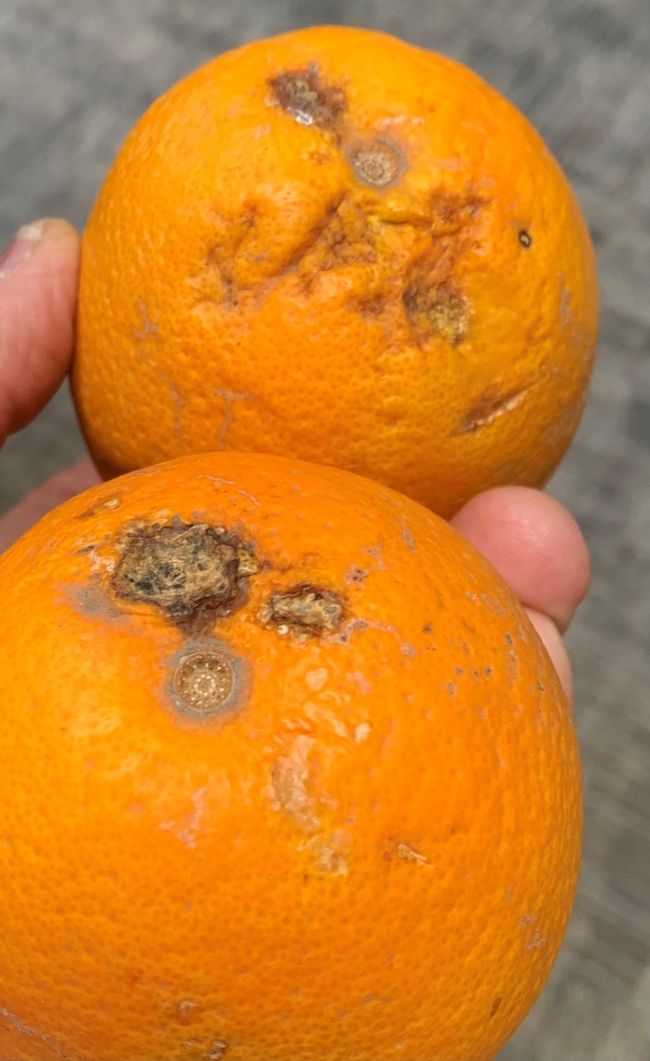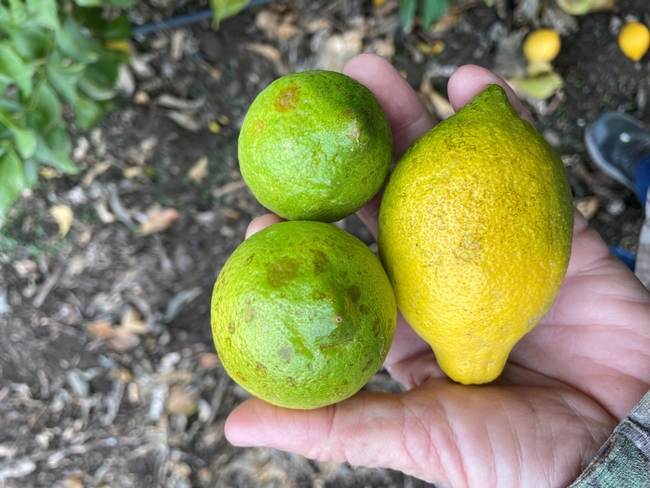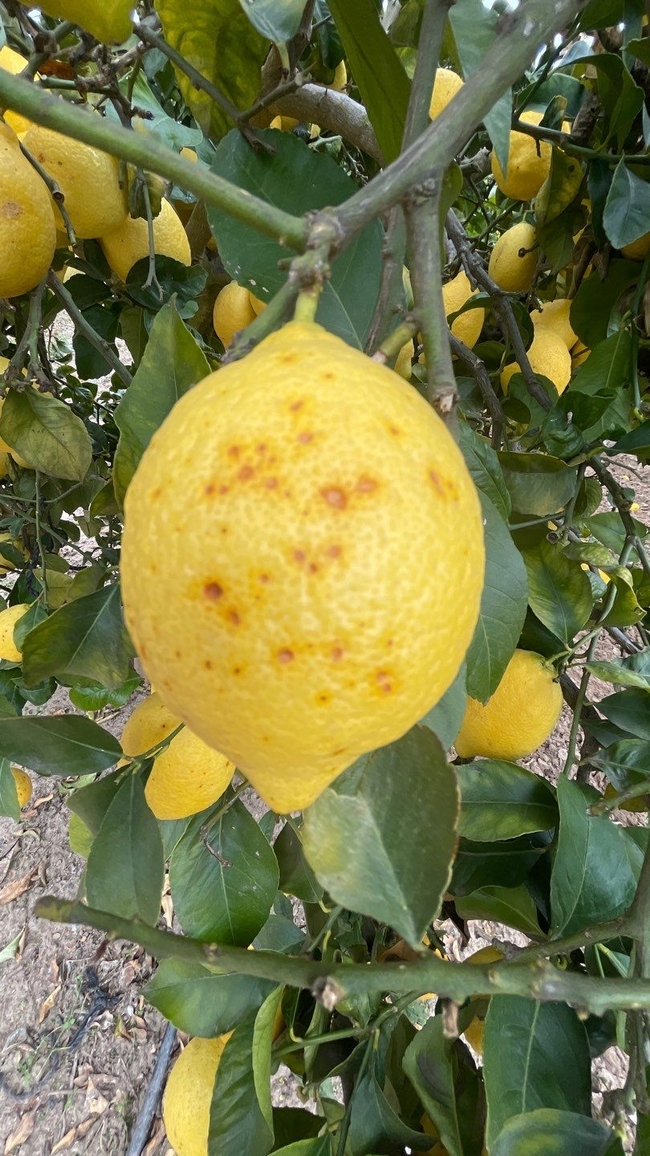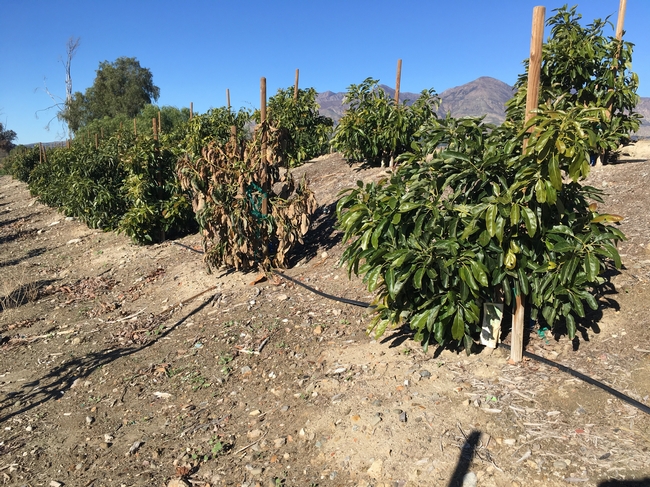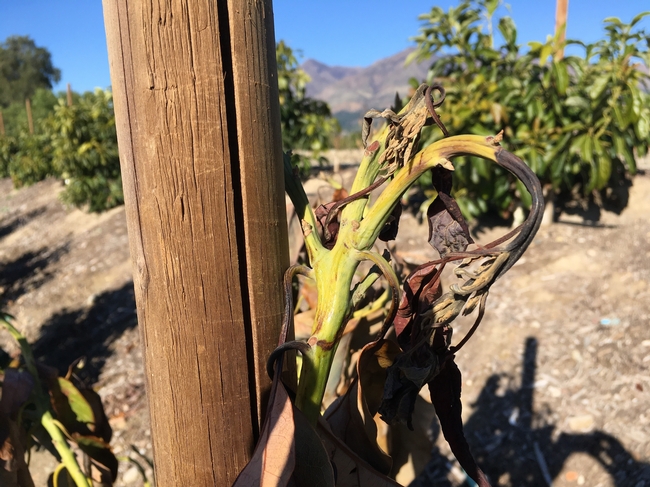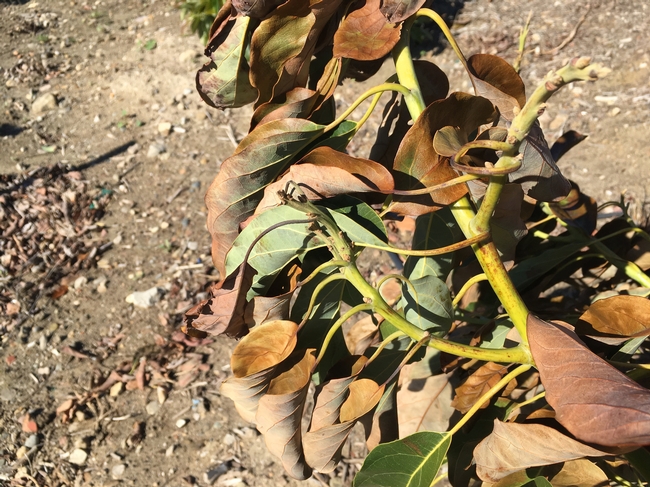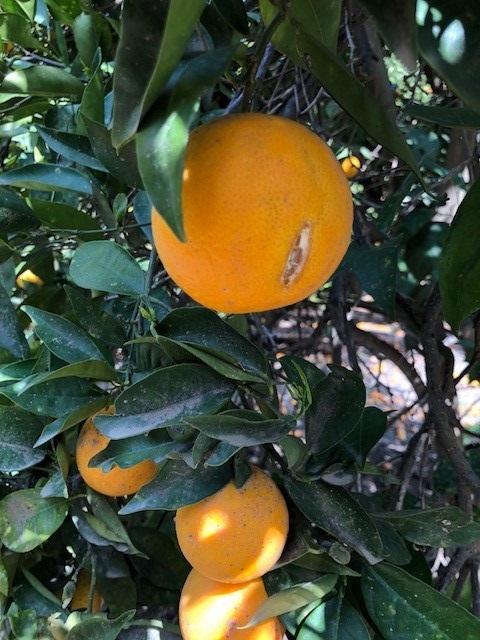
Posts Tagged: winter
Citrus Fruit Spotting
It wasn't supposed to rain this winter, but it did. The forecast was for La Nina which typically brings less rain and would continue the drought pattern we have had for the last three years. So with no rain, there is no need to spray a protective copper for brown rot or septoria, right? And with low prices for lemons, it pays to save money, right?
Well it did rain and we have had some problems. There have been problems, as well from the violent winds and the cold weather. According to Daniel Swain at Weather West, this was the coldest winter on record, even though the amount of time below freezing was low. The wet weather brought down trees and flooded fields, burying trees in some cases.
So we had unexpected rain, and violent winds and cold weather and that has led to concerns about the lack of copper applications. And there have been calls concerning symptoms on fruit that kind of look like disease, however in many cases it is not disease that is the ultimate cause of the damage. So let's look at some of this damage.
If copper had been applied, brown rot (Phytophthora sp.) probably would not have resulted from rain splash from the ground onto the fruit. There was a heck of a lot of mandarin and oranges that were lost in one case because of this.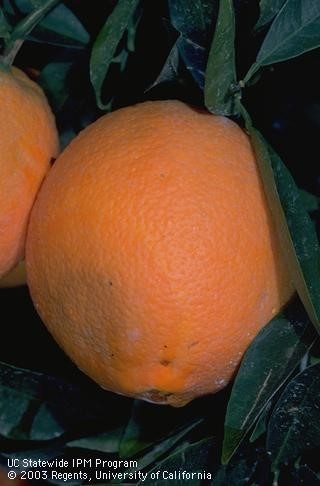
In a few other cases, we have seen septoria fungal spot due to the fruit staying wet too long. Finding the black structures can identify this problem
But a lot of fruit spotting that might be associated with disease causing organisms, is actually abiotic, caused by non-living sources, like
Hail
Puncture
Oil spray damage
Cold, wet conditions that may have been on the edge of freezing.
So, it was a wet winter. Blustery and cold. It would have helped in some cases to have had copper on, but there were other causes of fruit damage than just all that wet. Some growers regret not having just put it on as part of the regular regime. This coming year, it's time to get regular again and make sure the trees have a protective copper cover. But if the rain and cold and wind and hail are back, there are some things that are a lot harder to provide protection for.
Winter Yellows
Several calls have come in from growers lately about yellow avocado and citrus trees. the yellowing is most common on the late summer flush leaves or can affect the whole canopy on young trees. In severe cases leaves fall. This happens going into winter after a warm fall when growing conditions are good. During the winter, the root systems become depleted of stored starch and die.
During winter, trees go into what is called a “quiescent” state, a version of dormancy found in subtropical tree crops. This is a resting mode that protects them to a certain degree from frost damage. There is not much that can be done in a field setting until temperatures warm up and the trees begin growing again in late winter/early spring. As the temperatures increase, the trees gradually recover and the foliage re-greens.
Winter Yellows can be exacerbated in years when we do not have leaching rains to remove salts from the root zone. And it can also be more severe when we have those years when winter rains just never seem to stop and rootzones become waterlogged. We may never see that time again.
Photo by Greg Moulds

citrus winter yellows
Why O Why, One Tree???
It's winter time and avocados and other subtropicals are prone to frost damage. Little trees especially that haven't developed a canopy that can trap heat are the most prone. So it gets cold and all the orchard looks fine, but there's one tree that doesn't look right and in a couple of days it really stands out.
Here's an example of a year old tree that turned brown and it actually looks like it was doing better than the trees surrounding. It's bigger and has a fuller canopy..... or at least it did.
But there's all the symptoms of frost damage - bronzed leaves and dead tips.
A week after the cold weather, there is already sunburn damage on the exposed stems. See the brown spots on the upper fork? That will soon turn all brown and dry up.
This is still a healthy tree with green stems, in spite of the burned leaves. Now is the time to protect the tree from sunburn damage. This is what can kill the little tree. Time to white wash it.
Why did it happen to this one tree? Maybe it was a little bigger and needed more water than the surrounding trees. Maybe sitting on a rock and didn't have enough rooting volume for water. Maybe a touch of root rot (although the roots looked pretty good even for winter time). And there were ground squirrels in the area. Easy to bklamne them.
Listen to the sound of winter frost control
https://www.youtube.com/watch?v=rwTJveN8cIE
And when freeze damage gets extreme
https://ucanr.edu/blogs/blogcore/postdetail.cfm?postnum=16448
What Winter? Not Cold Enough for Apricot, Too Warm for Valencia
So, there are peach trees right now that are flower-less and leaf-less. Wisteria which should have flowered in February is bare. The Royal apricot next door has no flower. The Lombardy poplars and birch in Oxnard don't have leaves. Spring is here, grass is growing, but many deciduous trees are still leafless and haven't flowered? What is going on?
Deciduous fruit trees and many landscape trees like poplar, birch, willow and sycamore, etc. must go through a dormant period each winter in preparation for producing fruit and leaves the following spring and summer. This rest period, also known as a chilling period, is directly related to winter temperatures. For many varieties of trees, the most efficient temperature for chilling is 45°F, with little additional chilling effect at temperatures below 32°F. Brief warm spells in winter have a negative effect — temperatures above 70°F for four or more hours offset any chilling that happened in the previous 24-36 hours.
Once chilling is complete, the trees prepare to wake up from dormancy and bud after a certain amount of warming takes place. The amount of required warming is cumulative, measured by counting the number of degrees each day above a threshold temperature, usually 40°F. This cumulative warming, combined with how well the tree met its chilling requirement over the winter, determines whether a tree buds early or late in the spring.
Tables and charts have been developed for different chilling requirements of fruit trees. The number of hours needed at or below 45°F varies with the type of tree:
- Peach: 400 to 1050 hours
- Apple: 800 to 1100 hours
- Cherry: 1000+ hours
But in coastal Southern California, those hours are never achieved. You need to go to Santa Ynez to get close to those hours. More typically in the Santa Paula, Santa Barbara, San Luis Obispo area, the chilling hours below 45 are close to 200 and lower in many years. Some years there is more, some years less. How temperatures above 70 affect chilling aren't always clear. As a result there are several different ways to account for chilling and none of them work very well for the coast./
Fortunately, we have low-chill varieties of many fruit trees that will produce with lower chilling. So ‘Anna' apple and ‘Royal' apricot do well, and many landscape trees are adapted to the lower winter chilling along the coast and do well. Low chill blueberries thrive to the point that in many years, they don't even go dormant.
This year the warm, cold, warm, cold pattern has mixed trees up. There are some deciduous trees that are doing fine, while others still have not flowered and leafed out. The mix of temperatures is not following the traditional patterns used to calculate chilling requirement. The trees are following their own pattern.
In the last several years in Southern California, winters have seemed shorter and milder, resulting in earlier springs. Trees that have flourished in a location could have decreasing yields in the future, and the favorable locations to grow these fruit trees could shift.
The Fruit and Nut Center at UC Davis has a link to the CIMIS system operated by the CA Dept of Water Resources. The site has various methods of calculating chilling hours, none of them seem adequate though for describing what is happening in the landscape today in Southern California
http://fruitsandnuts.ucdavis.edu/Weather_Services/chilling_accumulation_models/
Look at it to see if you can see a new way of understanding deciduous tree response to the weather.
Just got a call recently that 'Valencia' oranges are splitting. This normally happens to ripe 'Navels' that are over mature and get erratic winter irrigation, especially during drought. In this case, the 'Valencias' are advanced in maturity because of the warm winter, probably advanced by two months. Again erratic watering has probably lead to this splitting.
What a crazy winter.
Splitting coastal 'Valencia' oranges in April, 2018
photo: Peaches without adequate chilling.
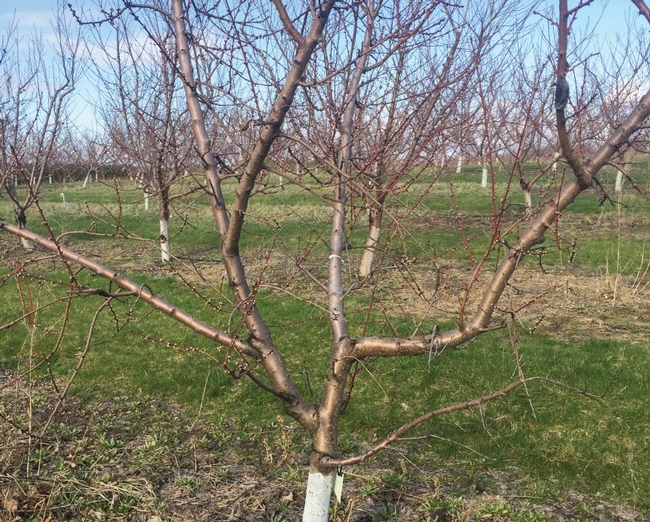
no chill peach
Spring into Fall
The drought has caused numerous conditions – physiological and pathological – that I have only seen in text books (see our newsletter article: http://ceventura.ucanr.edu/newsletters/Topics_in_Subtropics63007.pdf). But other phenomena are also occurring. Recently I saw a field of blackberries in full bloom and the other day a grower called in about a plum tree that was also in full bloom. What is going on? This is supposed to happen late winter/early spring. It turns out that often drought stress can supplant winter chill in some plant species. In this case, these two species are relatively low chill, meaning they don't require a lot of cold to break winter bud dormancy. The drought stress causes the buds to break dormancy.
This is similar to the “Verdelli” effect in lemons. This is a technique used to shift the period of optimum fruit production to a more profitable period, usually the summer when more lemons are used. In the case of plum and blackberry and other low chill deciduous tree crops, this would be pushing production into the coldest period of the year. It might work along the coast, but in the Central Valley it would probably just mean frozen fruit. But it's a possible method that we might play with.
Photo: October, 2016

plum blooming in fall

